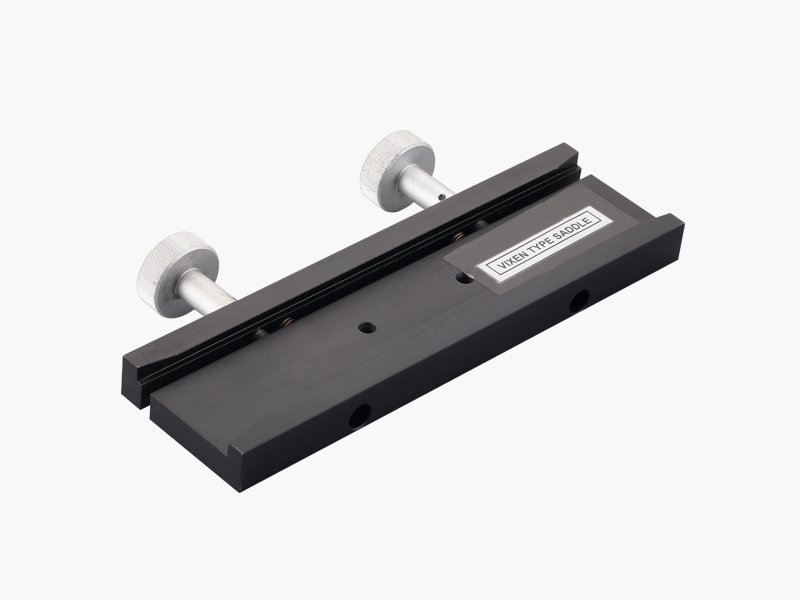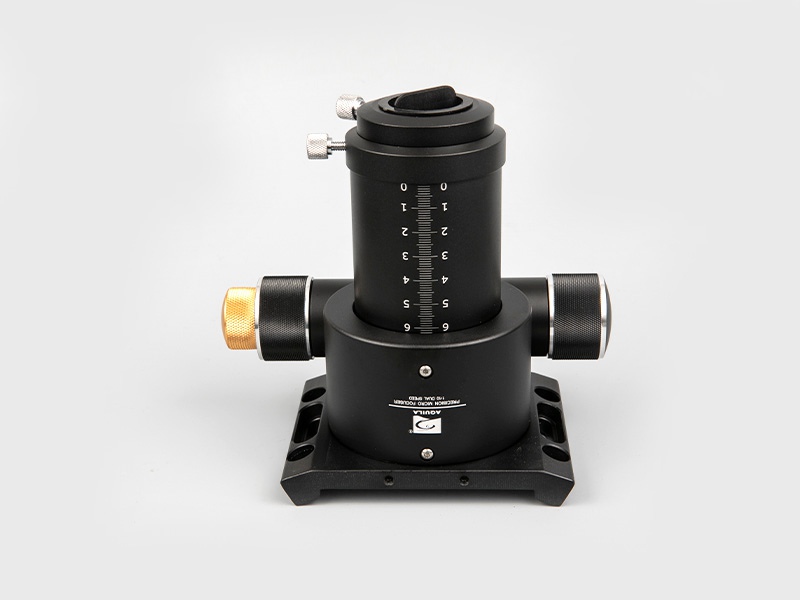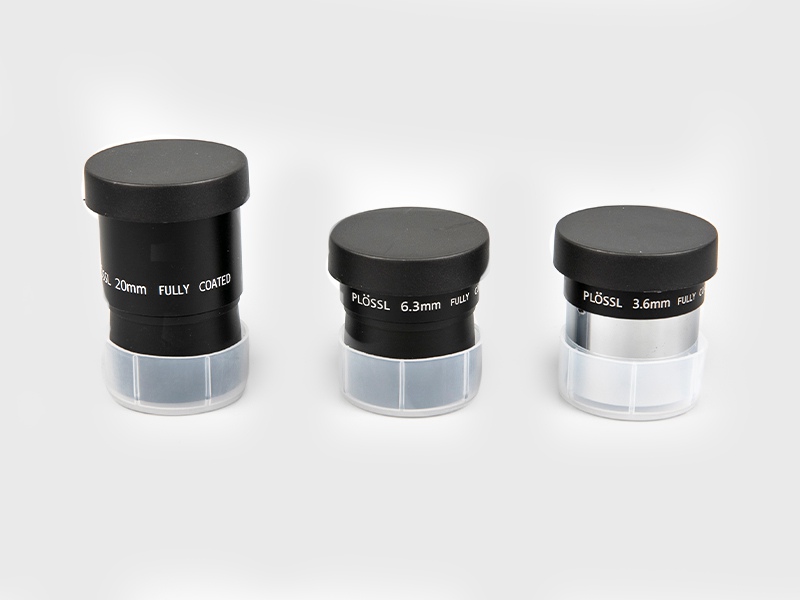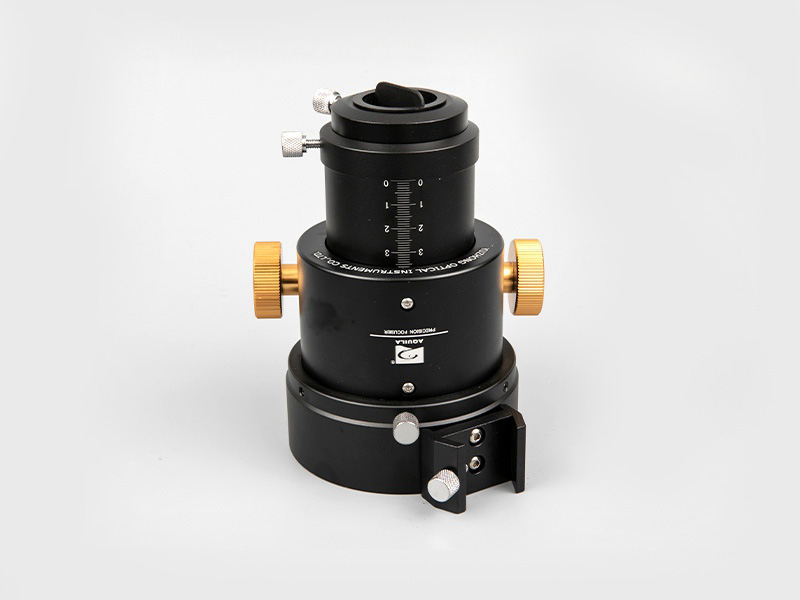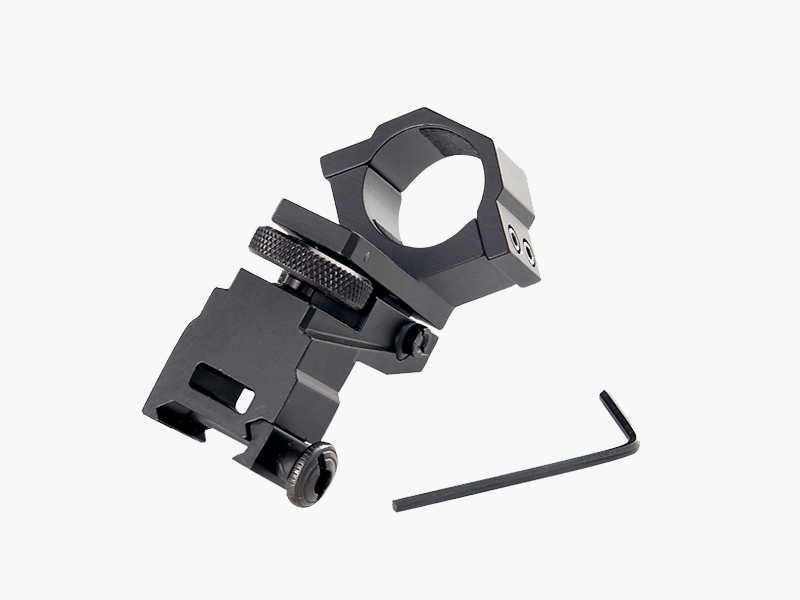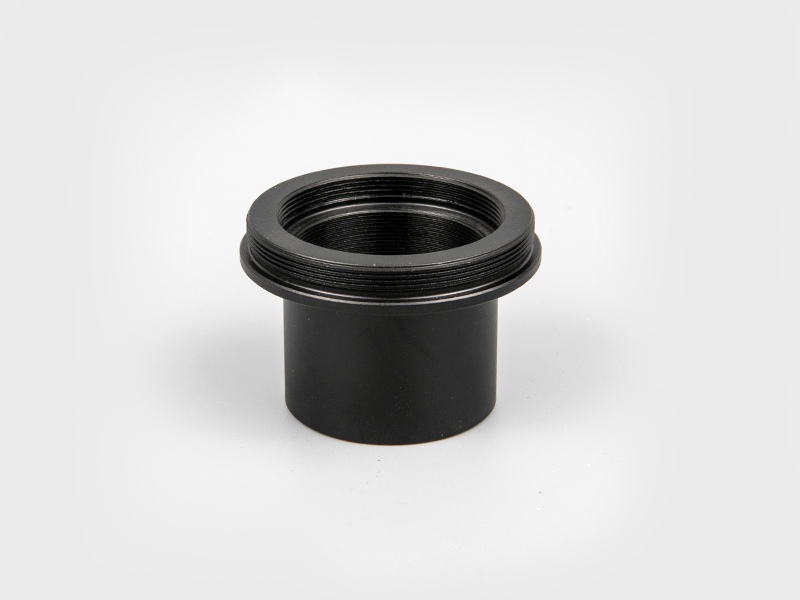The primary mirror of an astronomical telescope plays a leading role in the observation. However, many astronomical observations cannot be successfully completed with the primary mirror alone. It also needs an assistant, a starlight detector or starlight guide mirror. In order to quickly find the celestial object to be observed, a small astronomical telescope, that is, a finder mirror, is usually installed on the main mirror. A telescope that uses a refractor. Its optical axis is parallel to the optical axis of the primary mirror to be consistent with the primary mirror objective. The objective lens aperture of the finder lens is generally about 5~10cm, the field of view is about 30~50, the magnification is about 7~20 times, and a calibration baffle is installed on the focal plane.
When observing, first use a starlight to find the object to be observed, and adjust the object to the center of the field of view. At this time, the celestial body is naturally located in the center of the primary mirror's field of view. When the main mirror is observed for a long time, in order to correct the tracking error in time, a monitoring lift mirror, called a guide mirror, is set next to the main mirror. An ideal astronomical telescope should not only have a good optical system, but also solve a series of mechanical structural problems. In order to observe any celestial body on the horizon, according to the choice of axis direction, the equipment of astronomical telescope manufacturers is usually divided into two categories: horizon equipment and equatorial equipment. In a horizon device, the mirror represents the celestial body's horizon longitude. As it varies along the horizontal axis, it represents the celestial body's horizon latitude. Due to the diurnal motion of the celestial sphere, the two quantities of the celestial body change at any time in the horizontal coordinate system, and the horizontal coordinate only represents the instantaneous position.
Therefore, in general, the horizon is not convenient for continuous observation for a long time. The equatorial device solves this problem. One of its axes is parallel to the celestial axis, called the polar axis. The other axis is perpendicular to the polar axis and is called the equatorial axis. This is the change in diagonal when the lens barrel is rotated about the polar axis, and the change in equatorial latitude when it is rotated about the equatorial axis. The declination of a celestial body does not change with the movement of day and night, it is a constant.
Therefore, as long as the lens barrel follows the celestial body to rotate around the pole, the purpose of keeping the celestial body in the field of view can be achieved. This is the basic principle of tracking celestial bodies. Obviously, this is to overcome the relative position changes caused by the Earth's rotation. The speed of the earth's rotation from west to east is 10 times every 4 minutes, and the tracking celestial body should also move around the polar axis from east to west at a constant speed of 10 times every 4 minutes. How can I make the lens barrel rotate like this?
The mechanical system that drives the tracking device is called the tachometer clock. Before this century, the power of the clock was provided by a chain hammer or spring, and the speed was controlled by a centrifugal governor. Now, the power to rotate the clock is driven by a motor, and the speed is controlled by an astronomical clock or a radio oscillator. Guide stars are used to compensate for tracking errors.
Ningbo Tianying Optical Technology Co., Ltd. is located in Yuyao, East Zhejiang. It is a high-tech enterprise integrating optical instrument research and development, production, sales and service.Adhering to the rigorous and sincere design concept, the company now has a number of branches, mainly engaged in: astronomical telescopes, telescope eyepieces, eyeglasses and optical instruments and accessories, etc. The enterprise has a high-quality, high-level technical team and international advanced professional equipment, which can timely handle customers ' routine or special business requirements, provide customers with high-quality and durable products, and also provide full technical consultation and perfect after-sales service.

 English
English 日本語
日本語 Deutsche
Deutsche España
España

